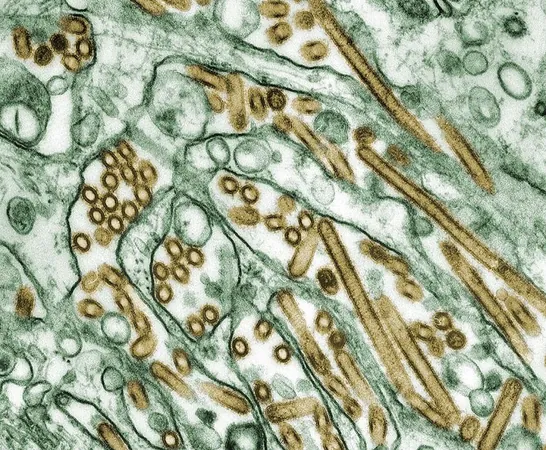
Groundbreaking Study Reveals Surprising Link Between Protein, Glycine, and Food Allergy Rates!
2024-11-22
Author: Nur
Introduction
Recent research has unveiled an unexpected relationship between the protein and glycine content in allergenic foods and the prevalence of food allergies. Surprisingly, higher levels of these compounds were found to correlate negatively with food allergy rates, while the roles of carbohydrates and fats in these foods appear to be insignificant.
Research Background
This insightful study was spearheaded by Duan Ni, a PhD candidate from the University of Sydney's Sydney Medical School Nepean. Ni and colleagues pointed out that while previous studies have investigated how different nutrients influence food allergies, the comprehensive role of macronutrients — particularly the interplay between protein, fat, and carbohydrate content — had not been adequately addressed.
Methodology
In their analysis, the researchers systematically examined the nutritional profiles of common allergenic foods to determine their association with food allergy prevalence. This approach was enabled by extensive epidemiological and nutritional data.
Focus on Specific Allergies
The investigative team meticulously reviewed data presented by the European Academy of Allergy and Clinical Immunology (EAACI), focusing on eight well-documented food allergies: egg, cow's milk, peanut, wheat, soy, fish, tree nuts, and shellfish. To paint a clearer picture of allergenic potential, the researchers shifted their focus from point prevalence — which only captures data over a short timeframe — to lifetime prevalence of food allergies. Their findings indicated a strong correlation between self-reported lifetime prevalence rates and clinician-diagnosed rates for food allergies, opening the door for more reliable evaluations moving forward.
Key Findings
The team's analysis, which spanned data from 2014 to 2023, identified a compelling link: as the protein content increased in allergenic foods, the rates of reported allergies decreased. Alongside this, glycine levels exhibited a similar trend — suggesting that these compounds may play a protective role against the development of food allergies.
Exceptions and Controls
Interestingly, the analysis was consistent across individual studies and meta-analyses, with one notable exception related to shellfish. Researchers also took additional steps to control for variables like milk allergies, which can skew diagnostic results due to reporting inconsistencies.
Conclusion and Future Directions
In conclusion, the study highlighted that increased protein and glycine levels in allergenic foods could lead to lower allergy prevalence. Ni and the research team suggest that future investigations should explore whether modifying glycine content in foods might influence their allergenic properties. This could fundamentally change food allergy management and prevention strategies, prompting a revolutionary shift in our understanding of food allergies within a broader nutritional context.
Implications for Dietary Science
With such groundbreaking findings, the world of dietary science holds its breath as researchers dive deeper into the complexities of food allergies — could this research pave the way for new treatments? Stay tuned!




 Brasil (PT)
Brasil (PT)
 Canada (EN)
Canada (EN)
 Chile (ES)
Chile (ES)
 España (ES)
España (ES)
 France (FR)
France (FR)
 Hong Kong (EN)
Hong Kong (EN)
 Italia (IT)
Italia (IT)
 日本 (JA)
日本 (JA)
 Magyarország (HU)
Magyarország (HU)
 Norge (NO)
Norge (NO)
 Polska (PL)
Polska (PL)
 Schweiz (DE)
Schweiz (DE)
 Singapore (EN)
Singapore (EN)
 Sverige (SV)
Sverige (SV)
 Suomi (FI)
Suomi (FI)
 Türkiye (TR)
Türkiye (TR)